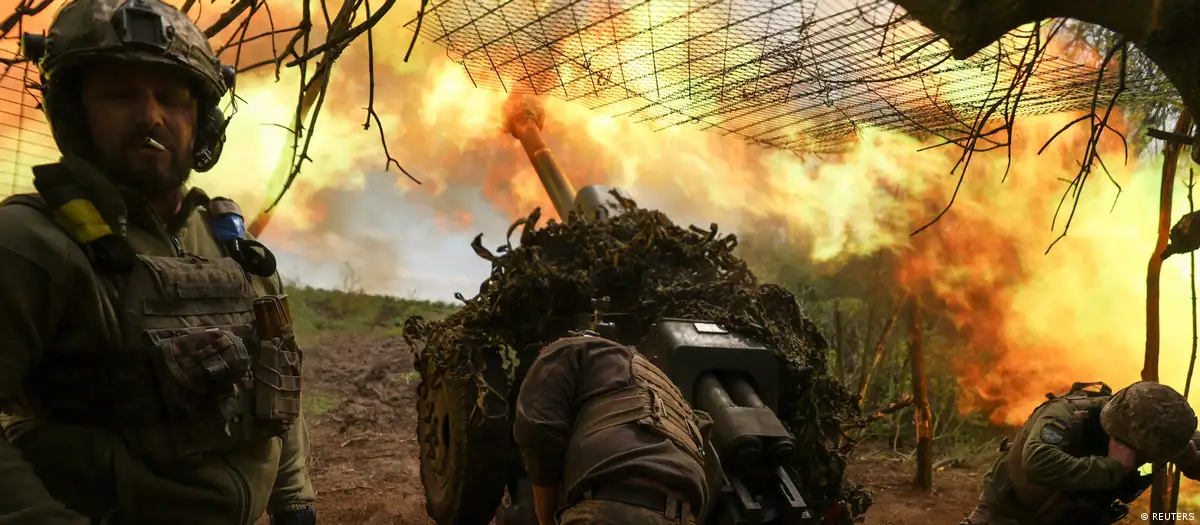For now, the Wagner Group mercenaries are absent from the Russian front, and it is doubtful whether Kiev will benefit directly from this. However, a gap may open up for a counteroffensive.
(DW) After the end of the Wagner Group rebellion in Russia, President Vladimir Putin gave the militia fighters three options: go to Belarus, return home, or integrate with Russian forces.
But what exactly happened to the approximately 20,000 fighters led by Yevgeny Prigozhin “is completely unknown,” comments German expert Nico Lange.
He recalls that the group has more modern infantry tanks and other armaments than what has recently been seen in videos of the Russian Armed Forces.
Russian Defense Minister Sergei Shoigu and his commanders should be interested in these weapons, but their integration into the Armed Forces may take time.
The power game between Putin, Prigozhin, and Belarus President Alexander Lukashenko, who mediated the agreement that put an end to the rebellion, is not over yet, analyzes the Institute for the Study of War in the USA.
The Institute’s researchers believe that this power play will continue to have short- and long-term consequences that could benefit Ukraine.
But how can Ukraine benefit from the current situation in Russia? And what options have emerged for the command of Ukrainian forces following the rebellion? So far, it is not known whether the mutiny has changed plans for the Ukrainian counteroffensive, which is underway.
Slow progress of the counteroffensive
Information posted on social media, satellite images and statements by the Ukrainian Armed Forces indicate that Ukrainian fighters have managed to liberate some villages along the battle line east of the city of Zaporijia and north and south ofBakh mut.
But frequently appearing drone footage shows Ukrainian infantry tanks held up in Russian minefields – that is, the Russian defense line, which over months has been closed off with land mines and tank containment barriers.
“Of course, you’re still working on the first obstacle: this combination of minefields and lack of air superiority, and that seems to be very problematic,” comments Lange, referring to the progress of Ukraine’s military.
Analyst Brady Africk of the American Enterprise Institute in Washington says, based on satellite imagery, that Russia is strengthening its defense lines.
Africk’s updated maps draw attention to the other major event in the war in June: the Kakhovka Dam explosion earlier this month. Ukraine blames Russia for the explosion, and Russia blames Ukraine.
The dam’s collapse was allegedly caused by an explosive detonated inside the structure by Russia, which controls the site, according to an investigative work by the American newspaper The New York Times.
The riverbed has dried up
In the meantime, the reservoir has emptied. Photos shared on Telegram and Twitter show the bed drying up in several parts. On Facebook, Ukrainian treasure hunters share their experiences in searching the ground for valuables with metal detectors.
According to a press release, the German War Graves Commission is investigating reports that “remains of German soldiers have been found in southern Ukraine and that these finds are linked to the destruction of the Kakhovka dam.” The organization protects the remains of World War II victims throughout Europe and provides for their burial in cemeteries.

A loophole for the Ukrainian army?
On old maps of the Wehrmacht (armed forces of Nazi Germany), several historic roads can be seen that crossed the back bed of the Kakhovka reservoir, from which the water has apparently already been drained.
Former US Air Force meteorologist David Helms has studied the condition of the former reservoir on satellite images and juxtaposed them with old Wehrmacht maps. Helms is part of a scattered group of Ukraine supporters who publicize their findings under the hashtag #NAFO, especially on Twitter. He identified seven roads in the now nearly empty reservoir that were still in use during WWII.
Currently, to the north of the former reservoir and the Dnieper River, which now flows in its historic bed, is the Ukrainian army, and to the south, the Russian armed forces.
Surprisingly, west of the Russian army-controlled town of Vasylivka, few Russian army positions are visible, at least on US analyst Brady Africk’s map, supported by satellite imagery.
It seems, at least, a possibility that a gap is opening up here for the Ukrainian army – with many imponderables, especially since Russian forces can always attack from the air. However, Lange says he gets the impression from the Ukrainian counteroffensive that Kiev is still keeping the big surprise to itself.
